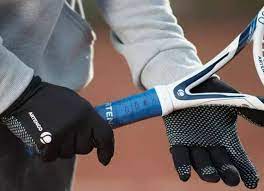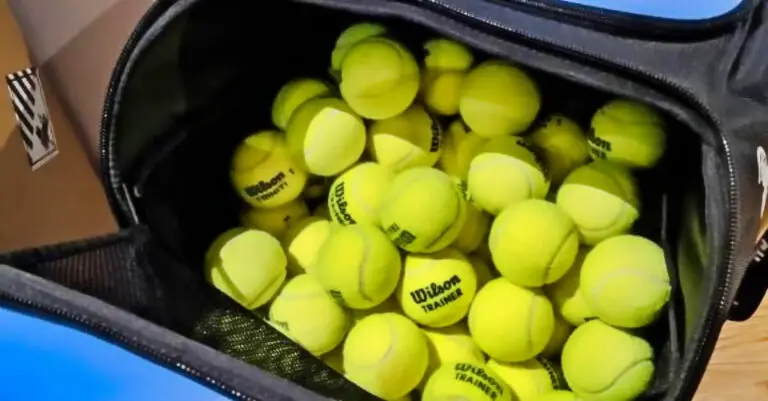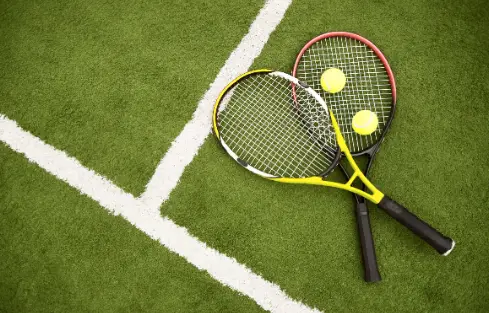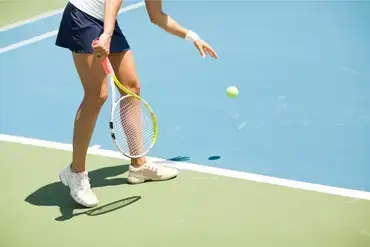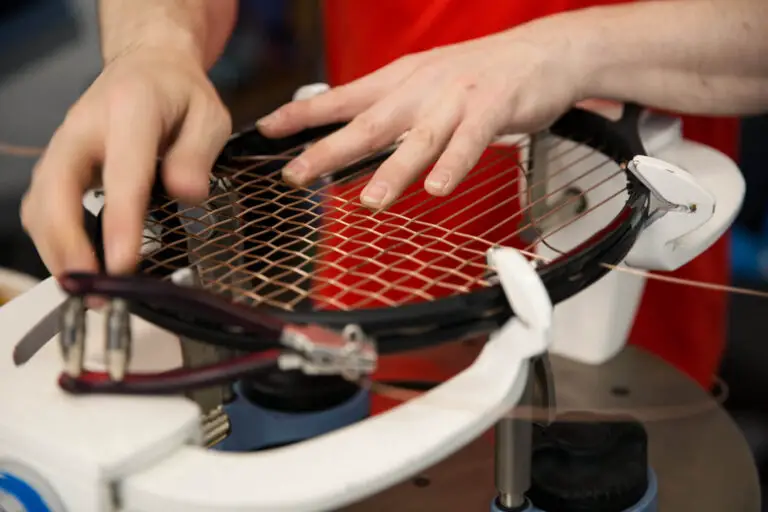Why Do Tennis Players Bike After Games?
Have you ever observed a tennis player pedaling away on a stationary bike after an exhausting match and wondered why do tennis players bike after games?
It’s not just a peculiar ritual or an unconventional way to enjoy a victory. It is, in fact, a scientifically-backed recovery technique used to speed up their body’s recuperation process and prepare for the next challenge.
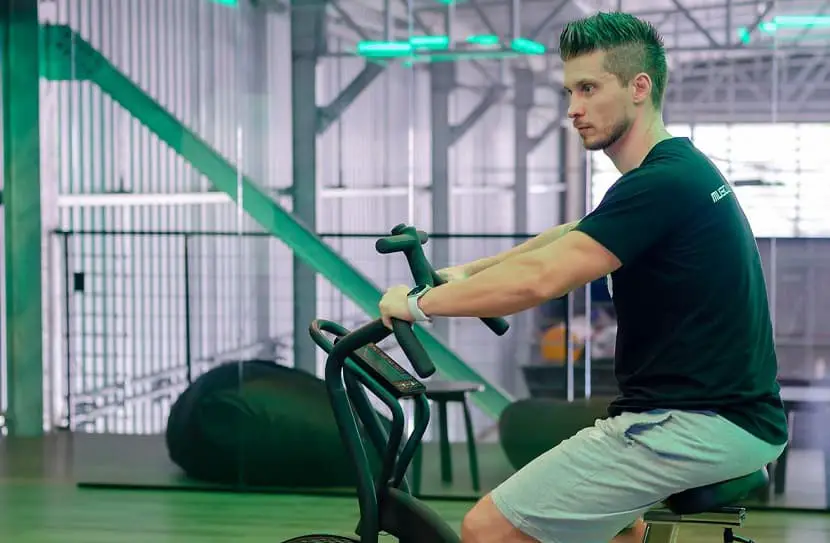
In this article, we will decode the intriguing logic behind this practice, exploring how it aids in flushing out lactic acid, preventing injuries, and even providing mental relaxation. Aside from this, we will discuss some other ways tennis players use to recover and stay fit for the next match.
2 Reasons Why Do Tennis Players Bike After Games?
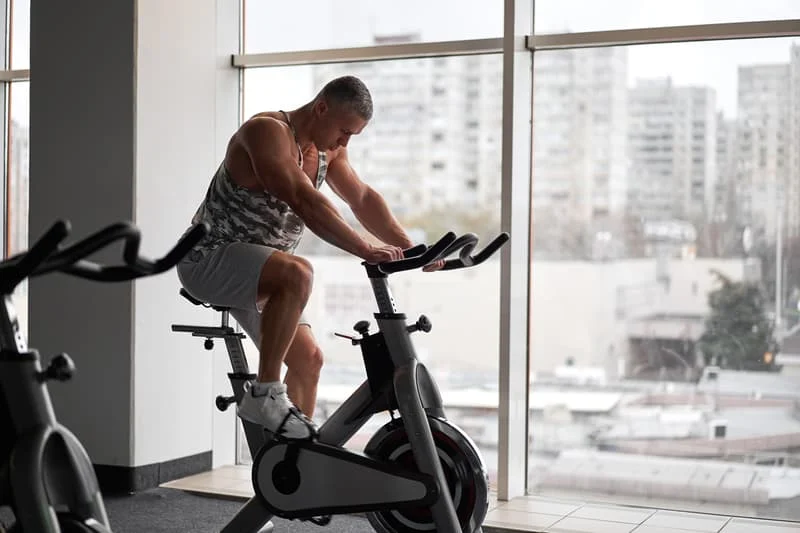
Here are the two explanations for why tennis players cycle after matches:
- Physiological Significance of Post-Match Biking
- Psychological Benefits of Post-Match Biking
Let’s discuss them one by one!
Physiological Significance of Post-Match Biking
Below are the 3 Physiological reasons why tennis players cycle after matches:
Lactic Acid Reduction and Enhanced Blood Flow
One of the primary reasons tennis players cycle after games is to aid in post-game recuperation. When players engage in high-intensity exercise, their bodies produce lactic acid, a metabolic byproduct that can contribute to muscle soreness and fatigue.
After a game, players can help their blood circulate more by biking at a low intensity, which helps to remove lactic acid and other toxic substances from their muscles.
The enhanced blood flow means that oxygen and nutrients can reach the muscles more efficiently, thereby reducing muscle soreness and facilitating faster recovery.
Gradual Return to Resting State

Another key physiological benefit of post-match biking is that it allows the body to gradually return to its resting state. Abruptly stopping physical activity after a demanding game can lead to a rapid decrease in heart rate and blood pressure. Such a swift change can potentially harm an athlete’s well-being.
When tennis players pedal at a moderate pace, they ensure their heart rate and blood pressure decline steadily and safely.
It promotes cardiovascular health and promotes overall well-being when a progressive transition is made from exertion to rest.
Injury Prevention
A tennis match is a grueling exercise, leaving the muscles warm and potentially more susceptible to injuries. By engaging in biking, players maintain a certain level of warmth and flexibility in their muscles during the cooldown phase.
As a result, they are less likely to suffer cramps or injuries that could prevent them from playing in future matches.
Psychological Benefits of Post-Match Biking

Beyond the physical benefits, biking after a match provides significant psychological advantages. An intense game can leave players mentally drained, with the post-match period often being a time of reflection and planning for future games.
Mental Relaxation and Reflection
Riding a bike offers players a chance to unwind mentally while still performing low-intensity physical activity. It provides a crucial transition phase where players can analyze their match performance, contemplate areas of improvement, and strategize for the games ahead.
As a result, it is possible to foster mental training for upcoming games and boost performance.
Other Ways Tennis Players Recover After a Match
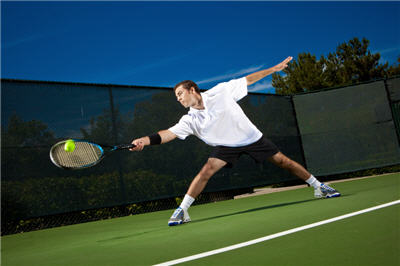
While biking post-match is a valuable recovery strategy, it’s crucial to remember that it forms only a part of an effective recovery routine. Other techniques that complement biking and contribute to comprehensive recovery include:
Stretching
Stretching is one of the first steps in any effective recovery routine. It aids in releasing the tension in muscles that have been exerted during a match, making it an essential practice for tennis players.
Regular stretching increases flexibility, allowing players to achieve a wider range of motion and prevent injuries during play.
In addition to enhancing flexibility, stretching promotes blood circulation. More oxygen and nutrients are delivered to the muscles by increased blood flow, hastening their recovery and repair.
Stretching immediately after a game when muscles are still warm can maximize these benefits, aiding in the reduction of muscle soreness and fatigue.
Hydration

Tennis players lose significant amounts of fluids through sweat during a match. Rehydration is thus crucial to maintaining proper body function and promoting speedy recovery. It helps replace the electrolytes lost during play, maintaining the balance of fluids in the body and ensuring muscle cells are well-hydrated for optimal function.
Drinking water is the most basic form of rehydration. Still, athletes often opt for sports drinks containing electrolytes to replace lost salts more effectively.
Maintaining good hydration habits is a key component of a player’s overall fitness and recovery regime.
Rest and Sleep
One of the most important components of rehabilitation is sleep. It gives the body a chance to mend tissues, make proteins, and release growth hormones—all of which are essential for muscle regeneration and recovery.
During sleep, the brain also processes and consolidates the skills learned during the day, a process known as memory consolidation.
This is particularly important for tennis players, as it enhances their technique, strategies, and overall performance in subsequent matches.
Massage
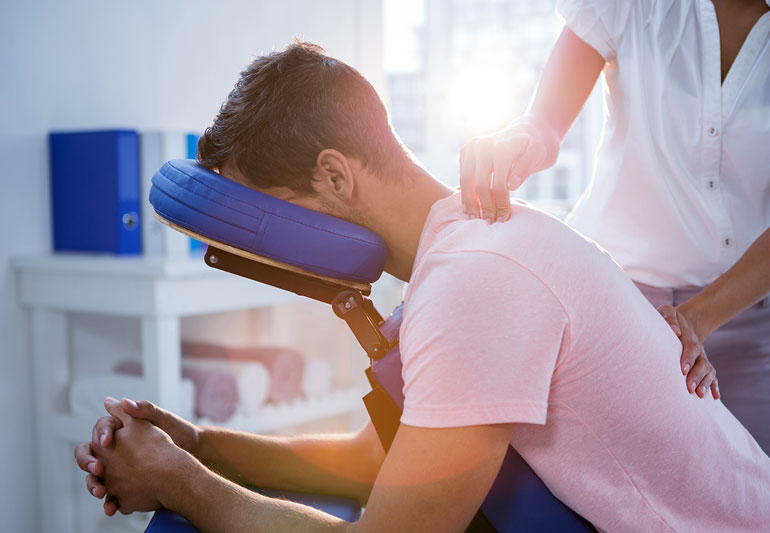
Massage therapy is a popular recovery technique among athletes. A post-match massage can enhance circulation, promote relaxation, and reduce muscle tension.
Increased blood flow aids in the delivery of nutrients to the muscles, resulting in a faster recovery.
Additionally, massages aid in reducing muscle stiffness and soreness, enhancing flexibility, and decreasing injury risk. The relaxing effect of a massage also aids in mental recovery, helping athletes unwind and prepare for upcoming matches.
Foam Rolling
Foam rolling, or self-myofascial release, is a technique that uses a foam roller to apply pressure to specific areas of the body. This method aids in breaking up muscle knots and boosting mobility, similar to a deep tissue massage.
Regular foam rolling can improve a player’s flexibility, reduce muscle soreness, and enhance performance.
Conclusion
The practice of biking after a tennis match is a crucial recovery strategy adopted by professionals for its numerous physical and mental benefits. Ranging from lactic acid reduction, steady return to rest, and injury prevention to mental relaxation, these advantages are instrumental for an athlete’s performance and longevity in the sport. Therefore, incorporating biking into a post-game routine might just be the competitive edge needed to excel in the challenging world of tennis.
Sources:
- https://tennisfansite.com/tennis-players-stationary-bike-after-match/
- https://sportshunt.net/why-do-tennis-players-bike-after-games/
- https://tt.tennis-warehouse.com/index.php?threads/exercise-bike-after-tennis.711557/
- https://tennisfaq.com/2023/05/11/why-do-tennis-players-bike-after-games/
- https://beardogbikes.com/why-do-tennis-players-ride-bike-after-match/


